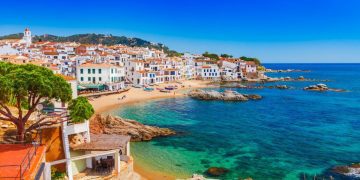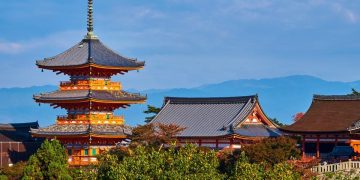BIBLE archaeologists have uncovered the secrets of an ancient city which could prove that the story of Moses leading people to the Promised Land is true.
The findings were shared by The Israeli Antiquities Authority and could be monumental given what little physical evidence we have supporting the story.

Archaeologists have discovered ancient artifacts that may coincide with Moses leading the Israelites from Egypt to the Promised Land[/caption]

Archaeologists uncovered several stone walls throughout the ancient town of Zanoah[/caption]

The treasures were uncovered in the town of Zanoah – which is mentioned in the Old Testament.
Researchers found stone walls, pottery and other artifacts that date back more than 3,200 years.
The Bible says that the Israelites reached the Promised Land, also known as Canaan, around 1406 to 1407 BC after wandering 40 years in the desert.
The team also uncovered a broken jar handle that featured the name of a king described in the Bible, seeming to provide more evidence to the Biblical story of Moses.
The Exodus story is spread over the biblical books of Exodus, Leviticus, Numbers and Deuteronomy.
It starts with the Israelites being enslaved in Egypt, before the Pharaoh agrees to release them after he is coerced by 10 terrible plagues.
Moses then leads the people to the Red sea, stretching out his hands and causing the water to miraculously divide.
But, the Pharaoh had changed his mind and the Egyptian army were hot on the heels of the fleeing Israelites.
God again commanded Moses to stretch out his hand and the sea engulfed the army.
Once they reached the Sinai Peninsula, scripture says they traveled to Mount Sinai, where Moses received the 10 commandments.
The group then headed to the southern border of Canaan, but being too scared to enter, were condemned to spend decades in the wilderness by God.
After passing the years at the oasis of Kadesh Barnea, the Israelites then traveled to the eastern border of Canaan, where Moses died and was buried on Mount Nebo.
In the subsequent Book of Joshua, Joshua takes over the leadership of the Israelites, leading them into the Promised Land across the River Jordan and conquering Jericho – and Zanoah is mentioned in the Book of Joshua.
Joshua 15:34,56 outlines the boundaries and cities within the tribal allotment of Judah once they entered the Promised Land, which includes Zanoah.
Researchers dug out the area in 2019 but released their findings in March.
The team uncovered walls built with rows of large, white rocks, which they believed were retaining walls for farming Terraces used to create level areas for planting and to protect steeper soil from erosion.
Bible discoveries
'MOSES' ALTAR'
At Jabal al-Maqla there is an ancient altar site composed of uncut granite stones at the base of the mountain and the remains of what appears to be small, ancient pillars composed of marble beside it just as in the Book of Exodus.
Moses is said to have built an altar made of uncut stones at the base of Mount Sinai and set up 12 pillars representing the 12 tribes of Israel beside it.
So far nine pillars have been found with several broken pieces of marble scattered throughout the area.
'GOLDEN CALF WORSHIP SITE'
Two more crucial pieces of evidence at this mountain are what is believed to be the Golden Calf worship site and signs of a graveyard.
Chapter 32 of Exodus tells of the Golden Calf incident, where the Israelites make a golden calf, which was an Egyptian god, and worship it while Moses is on Mount Sinai.
When Moses comes back down the mountain, the golden calf worshipers are killed for their idolatry.
Mr Mauro said: “Close to the mountain, we have this site covered with depictions of people worshiping bulls and cows.
“And what's really significant is that these petroglyphs are isolated to this area. It's not like they're carved all over the mountain.”
MOUNT HOREB SPLIT ROCK
On the path to the suspected Mount Sinai is a towering split rock sitting on a large hill.
The rock and hill beneath show signs of massive amounts of water erosion — yet this is in an area that receives very little rainfall.
Mr Mauro said: “We believe this distinct landmark could be the rock that God commanded Moses to strike which water then gushed forth from, miraculously providing for the Israelite population.”
'Scorched Mountain Peak'
The real holy site, he says, is in the northwestern province of Saudi Arabia and there is strong evidence to prove this.
The researchers then went on to identify Jabal Maqla, a peak within the Jabal al-Lawz mountain range, as Mount Sinai.
The Bible said God descended on Mount Sinai as a fire.
And they claim the mountain, with its clearly blackened peaks, suggests this is the site.
'SIGNS OF PATH UNDER RED SEA'
In the Book of Exodus Moses holds out his walking stick and God divides the waters and they manage to flee.
The story goes that the water then came rushing back in and crushed the pursuing troops.
The foundation believes Nuweiba Beach is the most likely crossing point because studies have found land paths below the water.
They argue that this evidence found by Swedish scientist Dr Lennart Moller reveals the remnants of the fleeing army.
It is claimed they found what they believe were the shapes of chariots which were encased in coral, although the metal and wood had long since dissolved.
Across the Red Sea, there is said to be evidence that is allegedly a possible match for the Biblical campsite Elim, noted to have 12 wells and 70 palm trees with a dozen of the water sources remaining today.
Preserved pottery was also dug up and one had a stamp on the handle that read “of the King,” which was to honor King Hezekiah's reign in Judah in 701 BC.
The life of Hezekiah is described in the Bible book of 2 Kings, chapters 18-20.
In 2 Chronicles, the king is said to have reopened the Temple of Solomon – “the First Temple” and built on the spot where God made Adam.
Pottery fragments littered the landscape and roughly 20 percent dated back to the time the Israelites were said to have arrived.
The rest were fashioned over the next 900 years.
Describing a decorated fragment of a cosmetic bowl made of white limestone researchers said: “'It has a wide rim adorned with a decoration of three concentric bands separated by gaps.
“The external and internal bands are narrow and feature a rope decoration, while the central band is wide and features an intermittent grid pattern.”
Researchers also found bowls and jugs – one of which had perforations that suggested it may have been used as a lantern.
Metal objects were also discovered but the researchers did not specify when they were made, only that they were bronze jewelery and included a ring and earring fragment.
Other potential evidence that ancient humans once lived in the region included iron tools, nails of various sizes and bronze strips used for welding iron.
The researchers said: “'While it is likely that some of the finds originated in the ruin and were subsequently washed down the slope over the years, the majority of the finds, especially those dating from the early Byzantine period, relate to farming activities conducted on the hill slopes.”
They added that the large number of finds indicates the importance of the site “and highlights [its] potential significance.”
It comes as a new Bible chapter that contains hidden verses that came to light after it was erased by a scribe 1,500 ago.
The incredible discovery that dates back to the 3rd century features chapters 11 through 12 from Matthew and is one of the earliest translations of the Gospels.
The page came to light thanks to the use of ultraviolet photography on a manuscript at the Vatican Library.
The hidden text was initially erased by a scribe in Palestine- a common practice at the time as parchment was scarce so manuscripts were often erased and reused.

In the Bible it says Moses parted the ocean to lead the Israelites to freedom[/caption]

The Israelites were kept as slaves in Egypt before they were free[/caption]Source
































